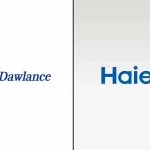Cement manufacturers in the northern region have increased prices by Rs40-50 per bag for the third time during the past 15 days, setting a new record of Rs840-850 per bag, amid surging coal prices.
According to a research note by Intermarket Securities, the fresh increase takes the total price hike to Rs150-160 per bag.
The global coal prices surged to $455 per tonne recently but at present are hovering around $355 per tonne coupled with higher transportation costs amid rising petroleum prices, said the report.
As per the report, cement producers have so far passed on the cost increase up to $250 per tonne equivalent of coal price impact and they may further increase the prices if coal sustains the $300 per tonne level.
The surge in coal prices has forced local cement players to switch towards other resources where Afghan coal has taken a lead by cutting down input costs and providing a breathing space.
Almost all the northern producers are substituting imported coal (mainly from South Africa) with local and Afghan coal, between 20-50 percent of total coal usage (mostly Afghan coal) depending on the availability and each company’s plant specification.
Read More: Govt mulling tax to improve capacity utilization in cement sector
Presently the landed cost of Afghan coal is around $170-200 per tonne. South players, on the other hand, are still mainly using Richard Bay coal while local cement prices in the region are hovering around Rs860-880 per bag, the report said.
According to a report of Foundation Securities, international coal prices have surged around 114 percent in the last 3 weeks. This has forced local cement players to switch towards other resources where Afghan coal has taken a lead by cutting down input costs and providing breathing space.
Players like Cherat Cement, Lucky Cement, and Maple Leaf Cement Factory (MLCF) have switched to 60-70 percent usage of Afghan coal while Pioneer Cement’s usage stands at 40-50 percent and DGKC is using 20-30 percent of Afghan coal in the northern region. Similarly, other players are also meeting a major portion of their overall coal requirement from Afghan origin coal.
According to the brokerage, Afghan coal used to trade at 25 to 30 percent discount to Richards Bay Coal (RB1) until a few weeks ago. This differential has increased in recent days post significant jumps in RB1 prices.
According to AKD Research, the monthly availability of Afghan coal ranges from 0.2-0.25 million tonnes while local coal’s availability is in the range of 0.1-0.125 million tonnes. The northern region’s monthly demand of coal at 0.42-0.45 million tonnes currently; hence, the northern region can easily replace 65-70 percent of its coal requirement through Afghan coal.
However, limited coal inventory and the unreliability of the supply chain of Afghan coal pose a risk to sustainability of the cement operations if the prices remain at current levels. This may lead cement players to shut down their plants until the reversal of commodity prices.
According to the AKD Research, the situation in the south is trickier as Afghan coal is not currently being utilized as the players in the region have stopped taking export orders currently due to low prices of clinker while they also prioritize local markets in a bid to improve longevity on current stock of coal.


